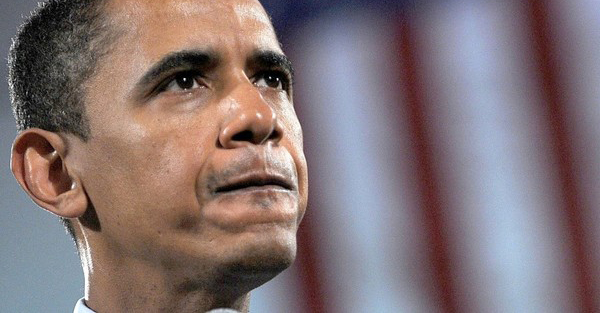
One day we’re saving the banks; the next day we’re saving the auto industry; the next day we’re trying to see whether we can have some impact on the housing market. – President Barack Obama
Yesterday’s New York Times devoted 6,000 words and a main feature to nothing short of an all-out defense of Obama’s economic legacy. In the process, they went full Keynesian.
From the opening paragraph that detailed Obama’s singlehanded efforts to rebuild the U.S. economy following the 2008 financial crisis, it was clear that author Andrew Ross Sorkin is more than simply a member of the lapdog media. Like a true believer, Sorkin bowed down at the altar of Obama’s government.
To hell with the real story behind the data. To hell with any logical thought processes. To hell with the notion that free markets, not governments, produce opportunity and prosperity.
As Sorkin tells it, the U.S. is now quite peachy. Because Obama.
Because Obama swooped in and saved Detroit’s bankrupt auto companies. Because Obama implemented the failed Cash for Clunkers program, which destroyed thousands of used – but still working – cars, pushing up the price of existing cars on the used market. Meaning that the very people he pretends to care about the most – America’s working class and poor – are the ones who suffered the most from this policy.
Because Obama is a renowned healthcare economist who saved the U.S. system from those greedy insurance companies. Even though the companies’ lobbyists helped write the bill and we found out just how much corporatism was at play after the bill was passed. Here’s to you, Nancy.
Because associates in Congress like Nancy Pelosi and Obama’s cabinet are do-good fairies. And because of Obama’s magic, he and the fairies can find the gold at the end of the rainbow to fund their programs. Or in other words, the rich, who must be taxed more.
And if only it weren’t for those pesky Republicans and their pushback on accumulating debt, according to Sorkin, maybe Obama could have accomplished more with the stimulus:
Many argue today that Obama’s $800 billion plan, the one that eventually became law, was not enough. With a bigger boost, the economy would have recovered much more quickly and years of needless suffering could have been allayed.
For those of us who understand that savings and ensuing capital investment is the way to grow an economy, here’s what Sorkin’s fallacious Keynesian mind really meant: Imagine if there were more government agents pointing more guns at productive people and then redistributing their money to companies like now-defunct government darling Solyndra. Everything would be great – we’d have $30 trillion in GDP and 0% unemployment!
Not that some of the Republicans held a sound economic philosophy throughout Obama’s term:
Critics of Obama, including the new House speaker, Paul Ryan, credit Ben Bernanke, the former Federal Reserve chairman, and Janet Yellen, the current chairwoman, for whatever recovery we’ve had since the crisis, contending it happened in spite of the president. “I think the Federal Reserve has done more,” Ryan said at a January news conference.
Bernanke and Yellen should join Obama as the last ones in line to receive congratulations for the economic recovery. Between these two Fed chairs, they have further inflated housing and stock market bubbles, put the printing presses in overdrive to fund expanded government, and destroyed the return on savings with zero or near zero interest rates.
Sorkin’s article on Obama’s legacy is not only inaccurate. It’s also incomplete. There’s much more to the 44th President’s economic legacy.
As told through Frederic Bastiat’s broken window fallacy, economics is about the unseen just as much as the seen. The unseen, while never realized, is still no less real. And Obama’s team has done plenty to ensure that businesses’ ideas will never become realized.
On a daily basis, the Federal Register – the synopsis of bureaucratic rule-making – amounts to 300 or more pages. Yes, each and every day. Take that number multiplied by the number of days that Obama has been in office, excluding weekends and holidays, and the results are staggering. Conservatively, Obama’s executive branch has cranked out over 500,000 pages of regulations.
Unfortunately, despite the promises from the 2016 campaign trail, if one believes that anything can be done about the atrocious state of regulations in the U.S., that would place them squarely in the land of pixies and fairy dust alongside Barack and Nancy.
Other economic indicators from Obama’s land of make-believe are the overall growth of the economy and health of the U.S. middle and working classes. It was just reported that U.S. 2016 Q1 GDP grew at an abysmal 0.5%. And, like the discrepancy between Obama’s rhetoric and reality in economic growth, the growth and opportunities of the middle class are fading. Lacking the rich’s cash-flowing assets, many have been left behind in this so-called recovery – and this is before a growing inflation rate eats away at purchasing power.
Conclusion:
There’s more to Obama’s economic legacy than is reported by The New York Times. Mounting regulations, a doubling of official national debt, and the stifling of the middle class are more indicative of the damage done under this president.
